
Category: Jazz
Yatabe “Track” Day (Japanese Jazz/Fusion Mix Vol.2)
Courtesy of Renaissance Man (and credentialed amateur opera singer) Jack Baruth (who was pointed to this by the estimable Sajeev Mehta), we have a “mix tape” of Japanese Jazz/Fusion music. Which I decided to let my readers know about because… times are tough, and we all need a little undemanding escapism. Rilly.
(Yeah, the YT title and header image include a lame pun: “track” as in auto-race track vs. track as in recorded music track. OK, I get it.
Not to over-share, but the most memorably difficult St. Valentine’s Day date ever, at least in my personal history, was when I asked a lovely young lady to accompany me to the symphony, myself having only glanced at the program. Continue Reading →
Cole Porter on a Steinway, vol. 1
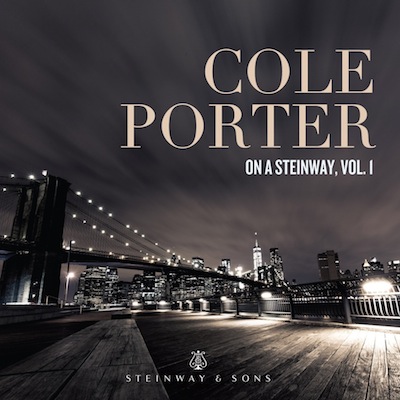
Various: Cole Porter on a Steinway, vol. 1
Solo-piano transcriptions of show tunes by Cole Porter
Steinway & Sons catalog number 30116
Release date: December 6, 2019
Recorded at Steinway Hall, New York City, July 2014-April 2019.
Well, here’s a real winner!
Steinway & Sons’ piano recordings—especially the ones that they themselves produce and engineer at the new Steinway Hall performance and recording facility in New York City—are of reliably superb audio quality. That said, I hasten to point out that Steinway’s releases that were not recorded in Steinway Hall are often (but not always) just as good in terms of sound quality; they are merely “different.”
I think that the Steinway recordings made at the Shalin Liu performance hall in Rockport, Massachusetts are objectively as “good” as the Steinway Hall ones. Subjectively, I have a (slight) personal preference for the slightly more distant and bloom-y sound of Shalin Liu. If anyone prefers the slightly more in-focus Steinway Hall sound, I will not lose any sleep.
I also must point out that the sonic differences I am noting (and such is the case with many audio differences) are minor; they might not reveal themselves to casual listeners who only give a casual listen.
By this point, Steinway has released well over 100 CDs. Not all of them have totally won me over to their artistic standpoints (of course, such are matters of taste, and you are free to disagree). But… when the stars and planets line up as they do here… Wow!
This collection of solo-piano treatments of famous Cole Porter show tunes (by three different pianists, Adam Birnbaum, Jed Distler, and Simon Mulligan) presents, in spot-on high-resolution (24/96) sound, standout Cole Porter interpretations that range from the wistful and pensive to the liltingly bouncy. All delivered via sloshingly-full buckets of piano technique and always with a refined musical taste that might have made Cole Porter smile.
You can hear the entire album right now, at no charge via Steinway Streaming.
Cole Porter on a Steinway, Vol. 1 goes on sale December 6, 2019 (downloads only; mp3 on Amazon; 24/96 FLAC on HDTracks).
More pensations, and sound samples, after the jump. Continue Reading →
Q & A with Aaron Diehl
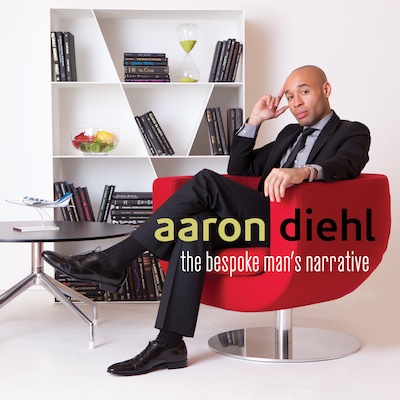
Aaron Diehl’s 2013 CD The Bespoke Man’s Narrative, his début on Mack Avenue Records, fell like a thunderclap upon the jazz landscape, reaching No. 1 on the JazzWeek Jazz Chart.
Something about the advance publicity must have caught my eye or ear, because I asked for a pre-release press copy of the CD. Upon playing it, I was so gobsmacked that I asked my friend and colleague Steve Martorella to come over to listen to it. Steve was a protégé of Leonard Bernstein’s, and his principal piano teacher was Murray Perahia, so I think that it is fair to say that Steve probably knows a little about piano playing. While he was listening to the climax of Diehl’s piano-trio version of “Bess, You Is My Woman Now,” Steve was definitely getting tears in his eyes. His comment: “I didn’t know that there was anyone new who could play like that.”
In due course my comments on The Bespoke Man’s Narrative appeared in Stereophile magazine. Since then, Aaron Diehl has released another small-group recording as well as a solo project. Next weekend (October 19 and 20) he will appear with the Rhode Island Philharmonic (under the direction of Bramwell Tovey) playing Gershwin’s Rhapsody in Blue. Mr. Diehl graciously agreed to answer a few questions.
Questions, answers, and a sound sample can be found after the jump. Continue Reading →
John Coltrane’s “Giant Steps,” Animated Representation
John Coltrane would leave for a road trip with the Quartet carrying nothing but his horn case and the Slonimsky book.
—McCoy Tyner
John Coltrane (1926-1967) is generally recognized as one of the most significant saxophonists in music history. However, at times I wonder whether the famous phrase applied to his playing—”Sheets of sound”—actually might lead the unwary to underestimate his talent, work ethic, and achievements. Such is the problem with music-history courses graded via multiple-choice examinations. “Coltrane???” “Oh, yeah—Sheets of sound!” A bit reductive… .
In truth, Coltrane was quite a Music Theory Nerd. He owned a copy of Nicholas Slonimsky’s fearsome Thesaurus of Scales and Melodic Patterns, and had memorized much of it. (That book, first published in 1947, includes more than a thousand musical examples, the majority being not in traditional Western major or minor scales.)
The title track of Coltrane’s LP Giant Steps (recorded 1959) moves through three keys separated by major thirds… hence the giant steps. The tight structuring of this brief musical gem should dispel the impression that Coltrane was just making random noises. The animated graphical representation by Michal Levy is in its own way a great work of art, too.
# # #
Keith Jarrett Trio “My Funny Valentine” (Rodgers and Hart)
According to pop-song authority Mark Steyn, there exist more than 100 recordings of Rodgers and Hart’s “My Funny Valentine“—by Chet Baker. Baker recorded the song as a trumpeter with Gerry Mulligan in 1952, re-recording it as a vocalist in 1954, a breakthrough performance that has been widely anthologized. I gather that for the remainder of Baker’s checkered career, audiences continued to demand it, because his last recording of it was in 1985.
The 1937 musical Babes in Arms (set in the imaginary town of Seaport, Rhode Island) is famous not only for “Valentine” (the name of the male romantic interest the song is sung to) but also the standards “The Lady Is a Tramp” and “Where or When.” Less well known but equally significant is that the show included a “dream ballet” by George Balanchine.
The song starts in C minor, and in emotional tone is both pensive and a bit anxious. The girl knows that her guy is a bit of a ditz, but the idea of losing him upsets her no end—the climax comes on the words “Stay, Valentine, stay.” Standout versions include those by Anita O’Day; Miles Davis; and Bill Evans with Jim Hall. And, of course, Keith Jarrett, here with Jack DeJohnette and Gary Peacock.
# # #
The Rosenberg Trio: “For Sephora.”
The Rosenberg Trio is made up of its lead guitarist, the charmingly named Stochelo Rosenberg (which for some reason always makes me think of high-school chemistry class) and his cousins the rhythm guitarist Nous’che Rosenberg and upright bassist Nonnie Rosenberg.
Seeing as all three are members of the Dutch Gypsy (or Roma) community, of course they have been hugely influenced by Django Reinhardt. [Note: I am aware that use of the term “Gypsy” is controversial in some quarters. However, the Rosenbergs themselves use that word on their own website; so, they most likely are not offended by it.] If I might brag—just a bit—I am only one handshake away from Django, through Stéphane Grappelli (the violinist who, with Reinhardt, co-founded the Quintette du Hot Club of France in 1934).
More, after the jump. Continue Reading →
Jane Monheit: “Taking a Chance on Love”
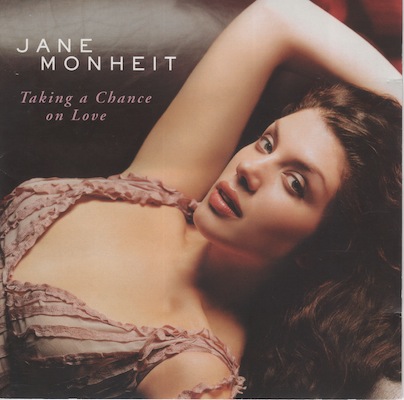
Jane Monheit: Taking a Chance on Love
Recorded at Avatar Studios, NYC, March-May 2004; released on CD September 2004.
CD Sony Classical SK 92495
(No high-resolution download found.)
Jane Monheit, vocals; Michael Kanan, piano; Orlando Le Fleming, bass; Rick Montalbano, drums; Miles Okazaki, guitar; various guests; Alan Broadbent, arranger and conductor; Peter Asher and Al Schmitt, producers; Al Schmitt, engineer.
“Great American Songbook” singer Jane Monheit’s début studio album for Sony Classical Taking a Chance on Love is in many ways the opposite bookend to Harry Connick, Jr.’s We Are In Love, which I wrote about here. After all, both titles use the “L” word… .
However, the important difference is that Harry Connick’s voice is of the “boy next door” variety, whereas Jane Monheit’s voice is of the “girl next door” variety, but only if you live next door to the Manhattan School of Music. Monheit’s own website is here; her Wiki is here.
Sound bytes, a YouTube, and more, on the continuation page. Continue Reading →
Harry Connick, Jr: “We Are In Love”
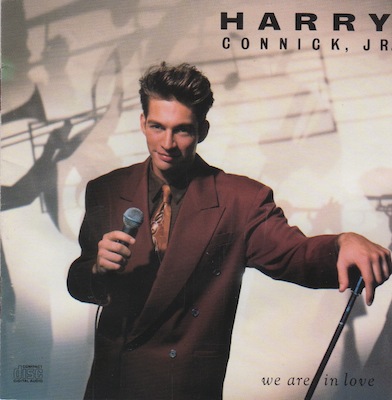
Harry Connick, Jr: We Are In Love
Recorded at Evergreen Radford Studio, North Hollywood, California in March, 1990 and RCA Studio B, New York, in April and May, 1990; released on CD and analog cassette 1990, on MiniDisc circa 1992, and on non-compatible single-layer stereo SACD (apparently from 44.1kHz PCM sources) 2000.
CD Columbia CK 46146
Harry Connick Jr., piano, vocals; Branford Marsalis, tenor and soprano saxophones; Russell Malone, guitar; Benjamin Jonah Wolfe, bass; Shannon Powell, drums; Harry Connick Jr., Marc Shaiman, George Butler, Bobby Colomby, producers; recorded and mixed by Joel Moss.
Talk about an unlikely success. In 1990, American actor, singer, pianist, and composer Harry Connick, Jr. released as anachronistic an album as anyone could imagine—male vocals, most tracks with big-band-style orchestral accompaniment. Connick wrote most of the songs, but there were also standards including “A Nightingale Sang in Berkeley Square” and Cole Porter’s “It’s Alright With Me.” We Are In Love sold two million copies in its first year, and Connick picked up the Grammy for Best Jazz Vocal Performance—Male.
Connick’s voice is of the “Boy Next Door” variety, but he makes the most of it; and the recording job is stunningly good. Thanks to the advocacy of MSB Digital’s Vince Galbo, Connick’s “A Nightingale Sang in Berkeley Square” (with excellent contributions from Branford Marsalis on tenor saxophone and Benjamin Jonah Wolfe on bass, who are the only musicians on the track) has become a favorite hi-fi-show demo track. Continue Reading →
Blossom Dearie: Verve “Jazz Masters” 51
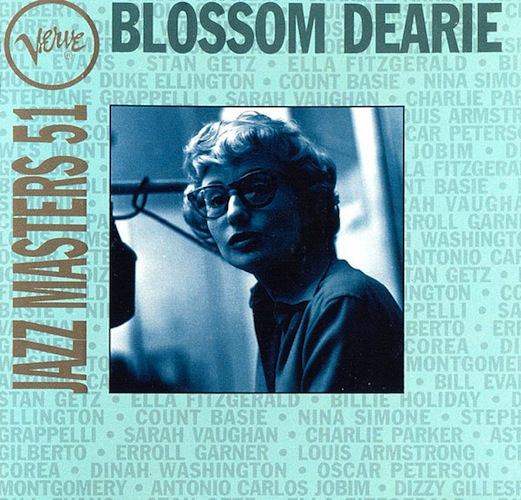
Blossom Dearie: Verve Jazz Masters 51
CD Verve 529 906-2
Blossom Dearie, piano, voice; Ray Brown, bass; Kenny Burrell, Herb Ellis, guitar; Jo Jones, drums; others. Recorded 1955–60; remastered 1996.
“Blossom Dearie” (full name Blossom Margrete Dearie) certainly sounds like a stage name. However, “Dearie” is an old Scottish name, also spelled “Deery” and “Deary.”
As for her given names, she was born in April, and one story is that the pear trees in the area around her home in rural New York were in blossom, and a neighbor brought blossoms to the Dearie home on the day of her birth… . I suspect “Margrete” was chosen by her mother, who either was Norwegian, or was of Norwegian ancestry.
That said, perhaps the stage-name thing (as well as her gamine cuteness, and her little-girl voice) made people underestimate Dearie’s musical intelligence.
WDR Big Band: “Just Friends”
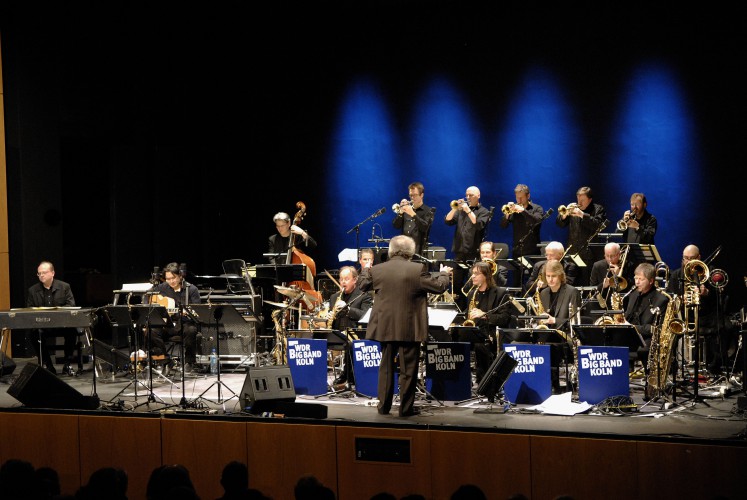
(Note: The photo above is not from the music video.)
WDR Big Band: “Just Friends”
Here’s an exuberant big-band video (from the year 2000) showcasing the WDR Big Band in Bill Holman’s unique arrangement of the “Great American Songbook” number “Just Friends.”
Written by Klenner and Lewis in 1931, “Just Friends” is a pensive, poignant ballad about lovers who have drifted apart. They are now “Just Friends.” (Two friends… but one broken heart.)
“Just Friends” is doubtless most often remembered as the blistering opener to Charlie Parker With Strings. Parker’s astonishing introduction nests details within details—music as Mandelbrotian fractal. Famous vocal versions include those by Ella Fitzgerald, Chet Baker, and Tony Bennett.


